Plextor M8V SSD Review: BiCS Flash Hits The Mainstream
Why you can trust Tom's Hardware
512GB Class Performance
Comparison Products
The Plextor M8V follows several other SSDs with 64-layer flash, like the Crucial MX500, Samsung 860 EVO, Western Digital Blue 3D, and SanDisk Ultra 3D. We don't have the Blue 3D, but we do have the SanDisk Ultra 3D, which is the same SSD with a different label.
We also include Crucial's entry-level BX300 and Intel's 545s. The Corsair Neutron XTi and Toshiba VX500 also join the ride, but their high price makes them largely irrelevant for value-minded shoppers.
Sequential Read Performance
To read about our storage tests in-depth, please check out How We Test HDDs And SSDs. We cover four-corner testing on page six of our How We Test guide.


All the products in this group reach the same sequential read performance under heavy load. The drives hit the limit of the SATA bus, but there is some variation at lighter queue depths. We can largely ignore those variations because the slight differences will go unnoticed when you use real-world applications. Even transferring data from the drive will net comparable results. That's the long way to say that these products all read sequential data well.
Sequential Write Performance


We see a little more variation during sequential write workloads. We found the Plextor M8V on the low end of the scale in our QD2 test. That isn't surprising because Plextor's specifications say that this model doesn't reach the limit of the SATA interface (550 MB/s).
Random Read Performance



The Plextor M8V lands in the middle of the random read chart. This model is the slowest drive with new 64-layer flash. The faster SSDs use new 64-layer flash, but from different manufacturers. We've already tested products with Toshiba's new flash that are faster than the M8V, so we know the flash is capable of more performance. The difference here is the TSOP package that reduces performance but also allows Plextor to cut prices.
Random Write Performance


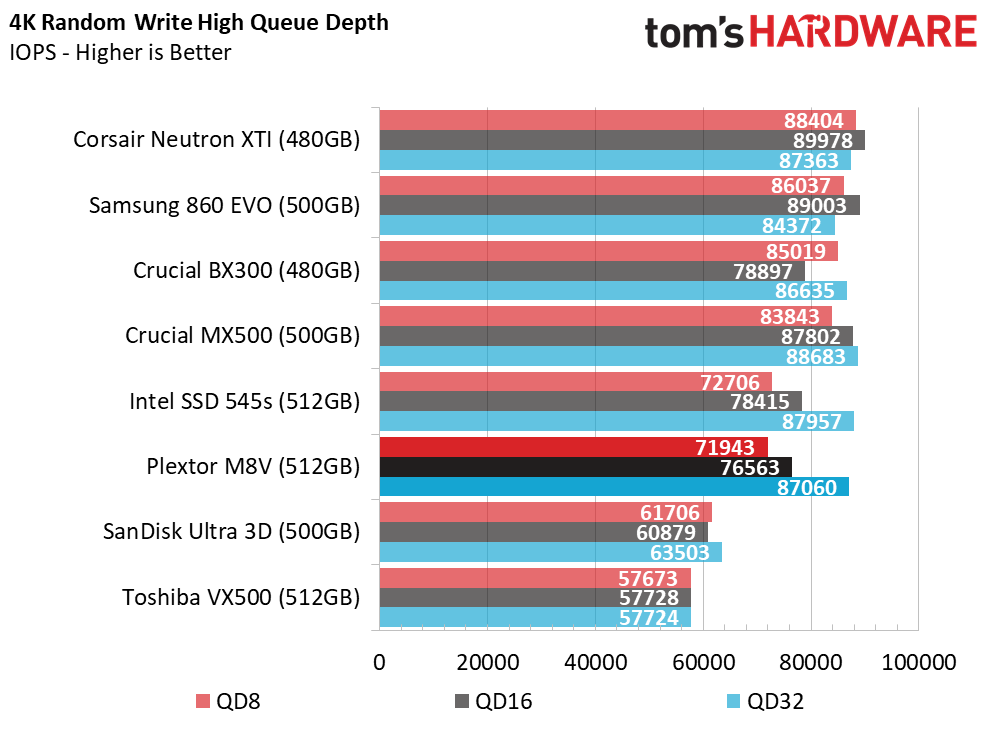
Middle-of-the-pack performance is the story in the random write test. This test is largely lip service because the SLC buffer is fast enough to absorb your momentary random writes with ease. The M8V's two mid-pack performances almost ensure a poor result in the mixed random workload test.
Get Tom's Hardware's best news and in-depth reviews, straight to your inbox.
70% Mixed Sequential Workload
We describe our mixed workload testing in detail here and describe our steady state tests here.


The M8V doesn't impress us with its mixed sequential performance. The SanDisk Ultra 3D with similar (but not identical) flash also struggles switching back and forth between reads and writes. BiCS flash paired with the NVMe interface normally does well in this test. The fastest SSD used a Toshiba controller. Toshiba sells the flash, but it apparently doesn't give away all of the secrets to making it into a fast SSD.
70% Mixed Random Workload


We knew the Plextor M8V wouldn't be able to compete with the other new products in the mixed random test, but we didn't know the results would look like this. This is the equivalent of a rocket taking off from the launch pad and then falling over in a glorious ball of fire.
Sequential Steady-State



The Corsair Neutron XTI is the only high-performance model designed for workstation workloads. We can easily see that in the performance results. The mainstream SSDs all lump together under steady-state conditions. The M8V is not a good choice for write-intensive workstation workloads.
Random Steady-State

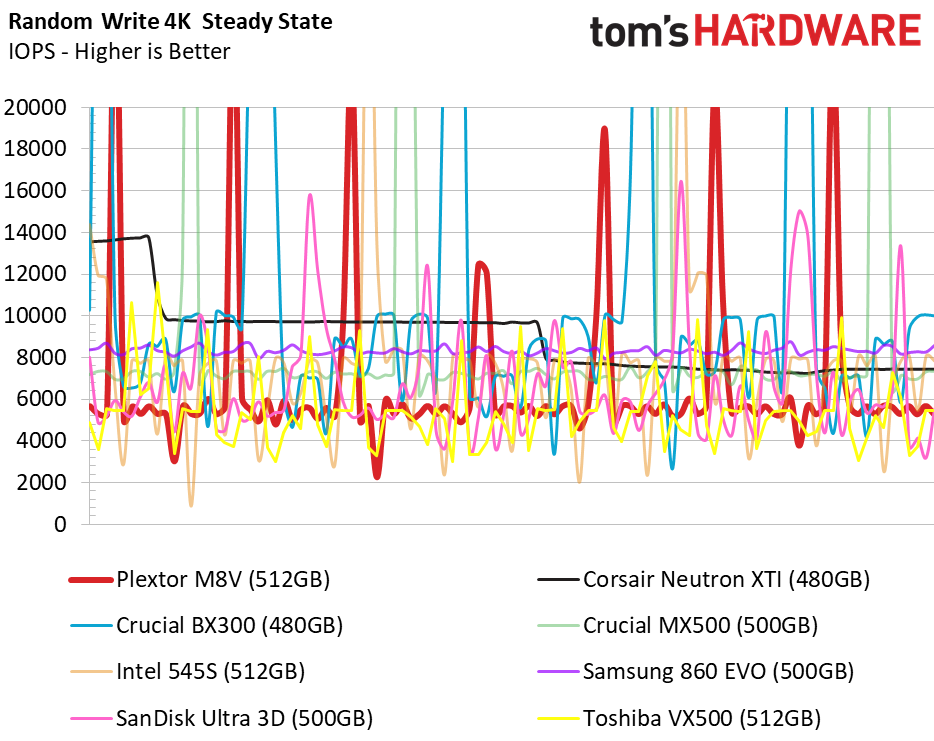
We use the steady-state random write test to determine worst-case performance and measure consistency, which is important for RAID arrays. Very few value SSDs deliver exceptional results in either of these disciplines. The Plextor M8V performs better than the previous generation SSDs with planar TLC flash, but the 500GB Samsung 860 EVO provides twice the performance for the same price.
PCMark 8 Real-World Software Performance
For details on our real-world software performance testing, please click here.
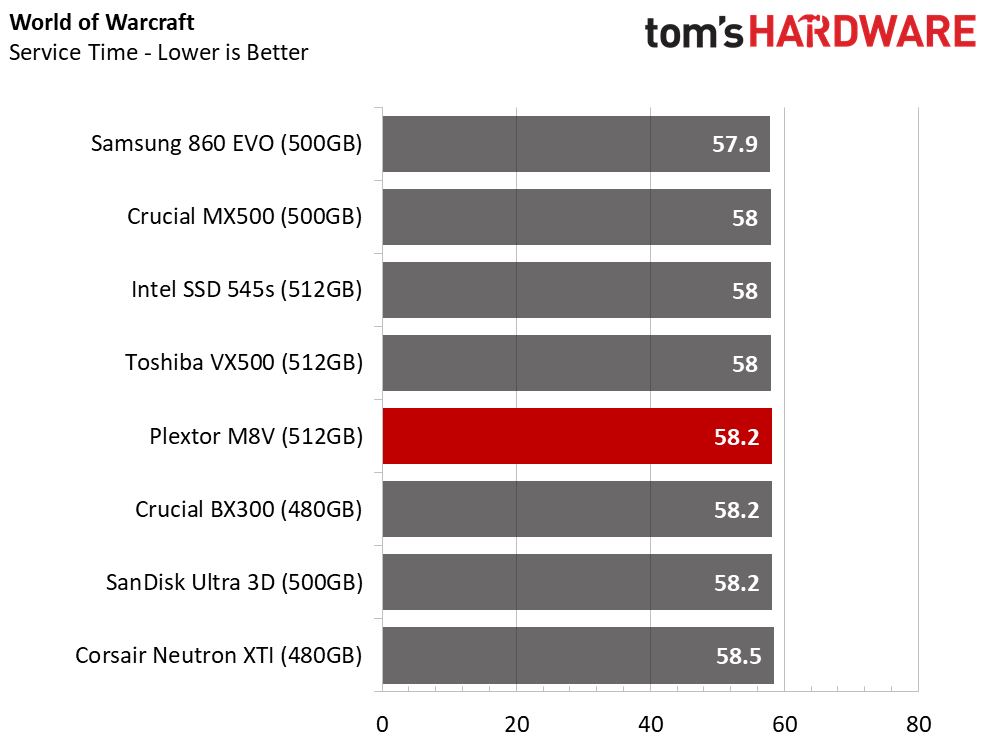




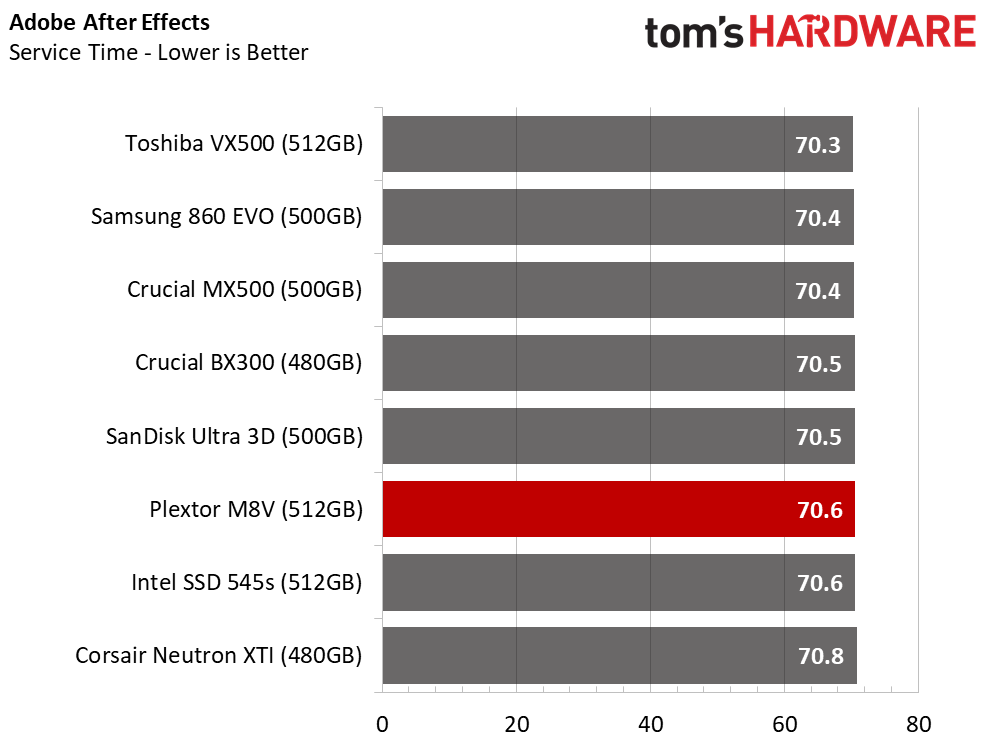



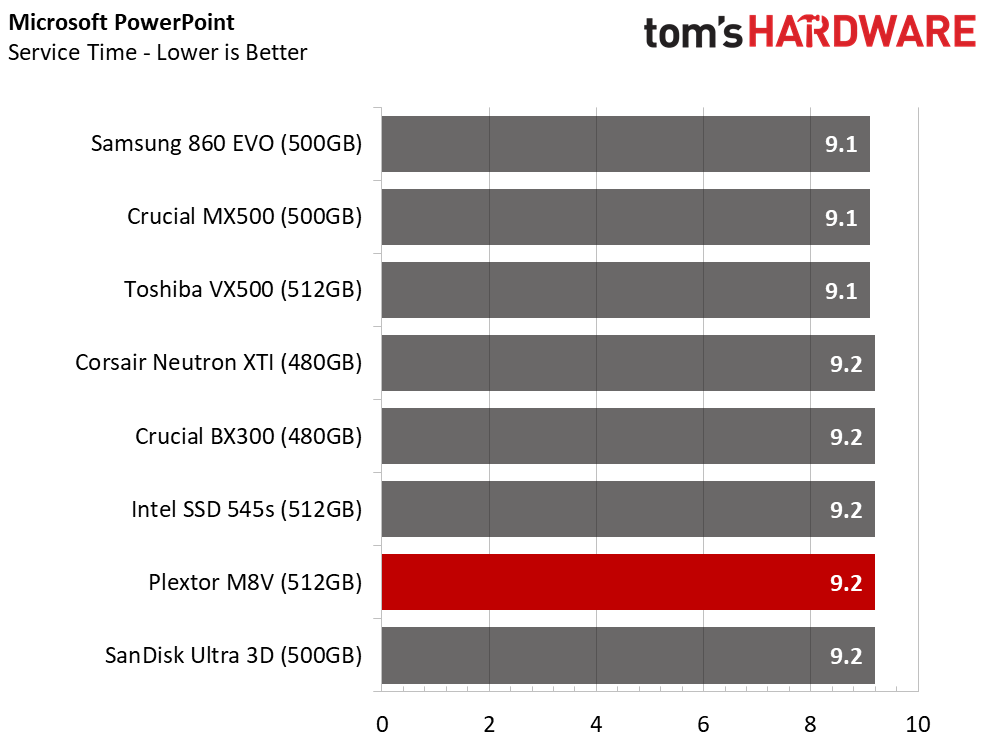
The M8V doesn't outperform any of the other drives in any of the application workloads, but it doesn't suffer from poor performance either. Under these conditions, all of the SSDs in the chart deliver similar results that would make them indistinguishable when you open an application or run a light workload.
Application Storage Bandwidth
The M8V falls to the top of the second performance tier of consumer SSDs. The M8V doesn't muster enough throughput to overtake the popular new 860 EVO or MX500 SSDs.
PCMark 8 Advanced Workload Performance
To learn how we test advanced workload performance, please click here.
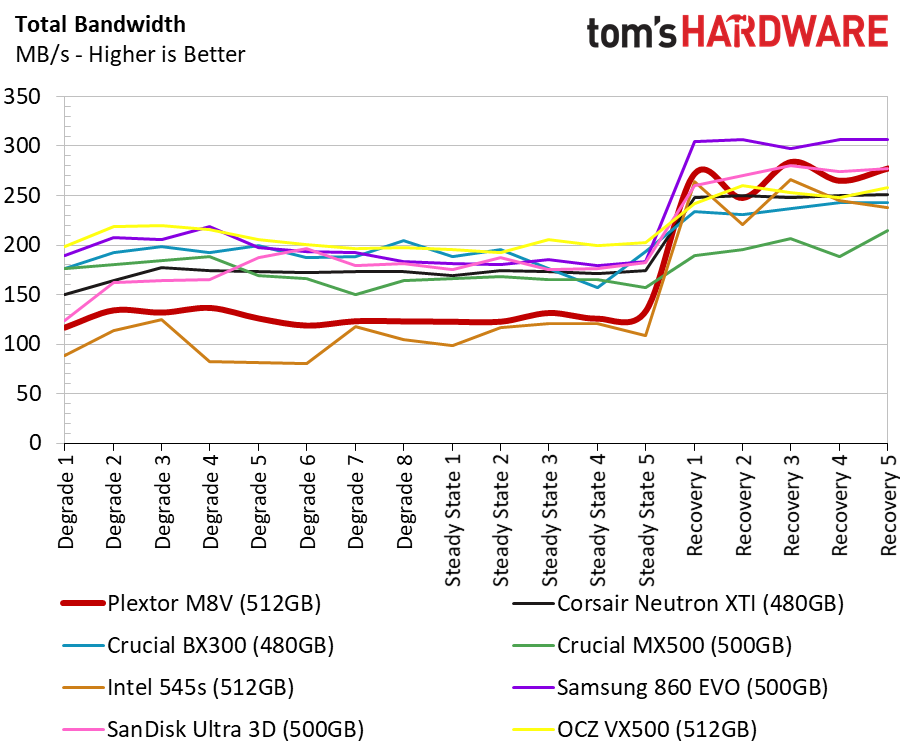
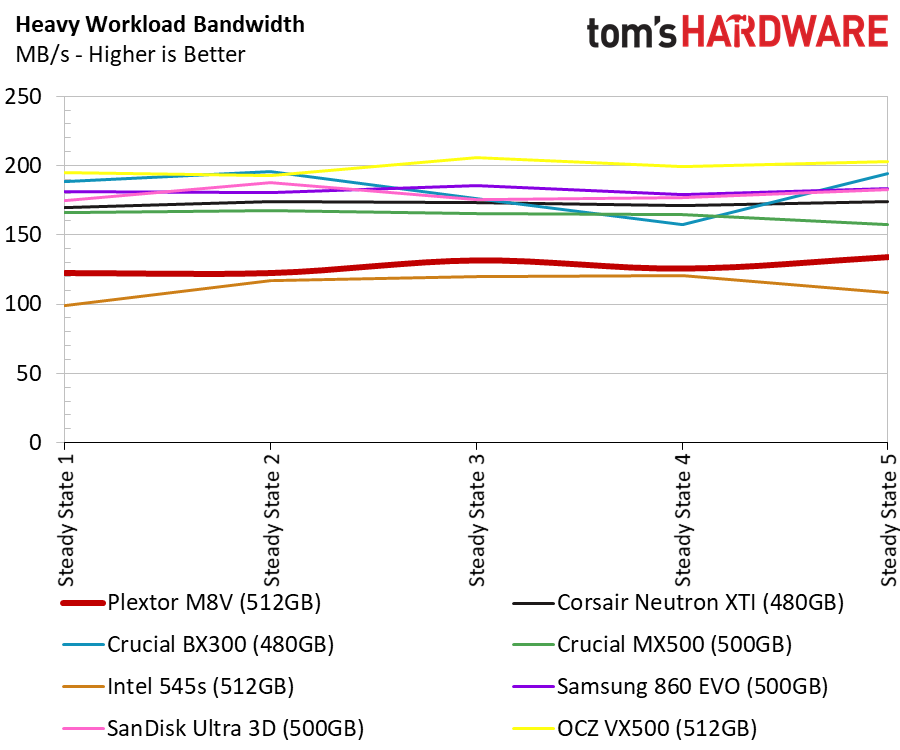

The M8V didn't have any issues recovering to a higher level of performance after a short idle time. This is a weak point for the MX500, but not the equally priced 860 EVO.
Total Service Time


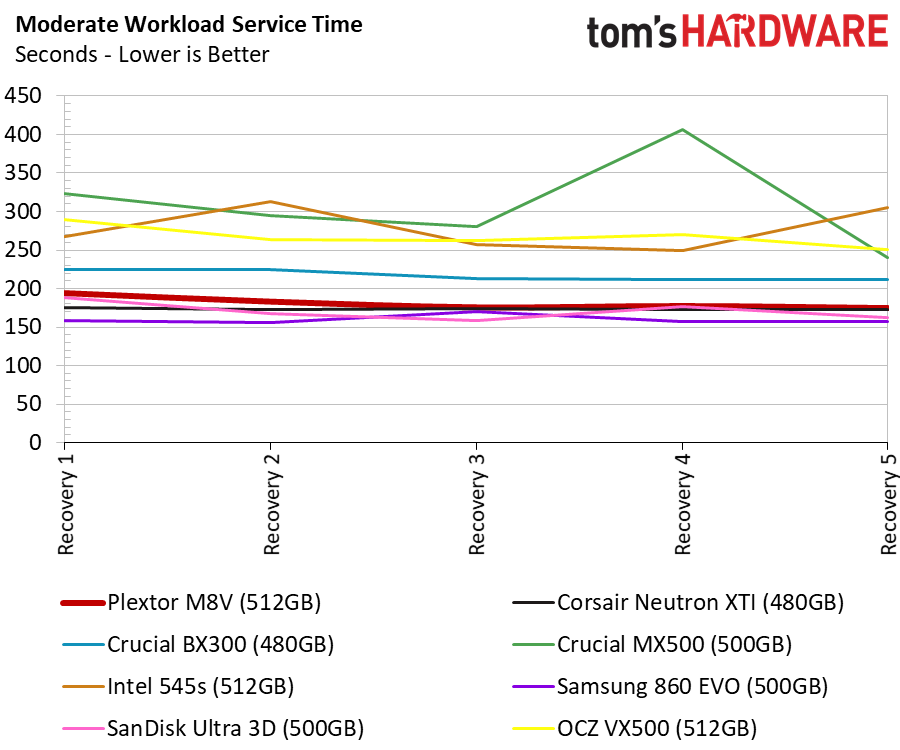
The M8V has a weak point: latency skyrockets during heavy workloads. The only time most casual users will experience this condition is after installing the operating system and software after a fresh build. You could also experience low performance when your drive is close to full because the drive won't have enough space for the background processes to operate efficiently.
Disk Busy Time
The disk busy time test shows that the increased latency under heavy workloads comes from the M8V and not outside factors. Most users will encounter recovery conditions after fairly light workloads. The M8V delivers satisfactory performance here, but not exceptional performance like we see with the 500GB 860 EVO.
BAPCo SYSmark 2014 SE Responsiveness Test
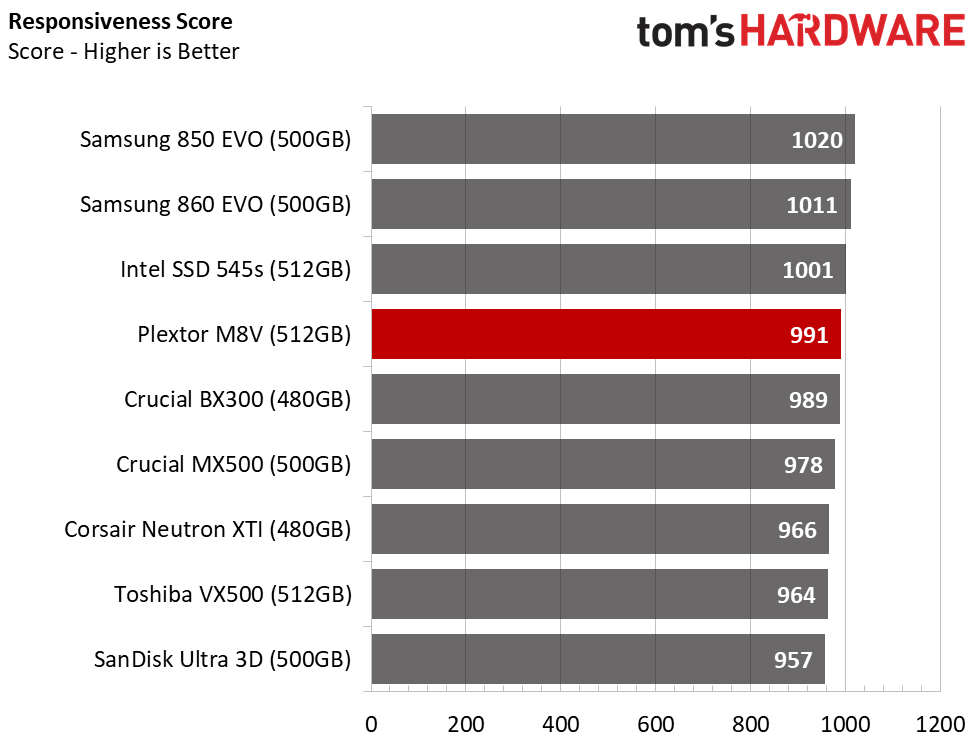

SYSmark 2014 SE uses typical office software from Microsoft, Adobe, and others, to maneuver through a day's worth of work in the office. The workload isn't extreme and has sufficient idle time to represent getting coffee, going to lunch, or surfing the web.
The Plextor M8V scores better than the less expensive 500GB MX500, but it trails the 500GB 860 EVO again.
BAPCo MobileMark 2012.5 Notebook Battery Life
To learn how we test advanced workload performance, please click here.
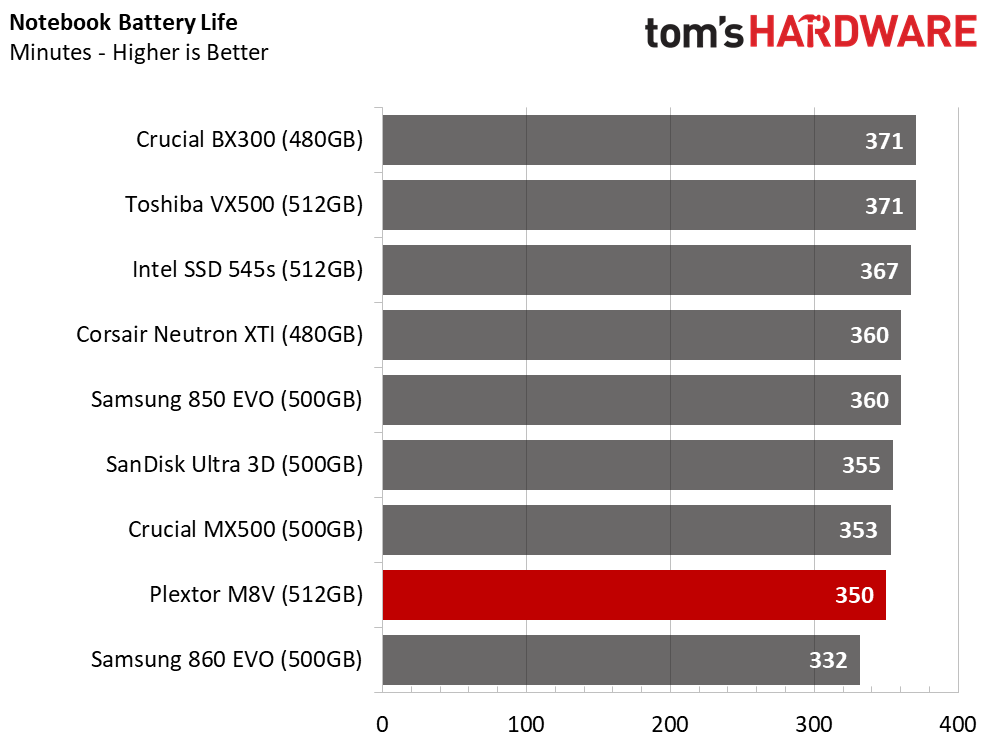

The 512GB M8V delivers roughly the same notebook battery life as a drive that comes in a notebook from the factory. Plextor's parent company LiteOn sells a lot of drives through OEM systems, and many make it into notebooks.
MORE: Best SSDs
MORE: How We Test HDDs And SSDs
MORE: All SSD Content

Chris Ramseyer was a senior contributing editor for Tom's Hardware. He tested and reviewed consumer storage.
-
Sakkura It has to be a bit frustrating to write a review whose entire conclusion could change at the drop of a hat... err, a price.Reply -
nibb0r 128 GB -> 119.2 GiBReply
256 GB -> 238.4 GiB
512 GB -> 476.8 GiB
These are just calculations. Please correct me if the actual drive capacities are different. -
derekullo As soon as I read the 70% Mixed Random WorkloadReply
This immediately started playing
https://www.youtube.com/watch?v=tKdcjJoXeEY -
littleleo Plextor has always positioned itself as a high quality/price product line. I remember when they were called TEXEL and were competing with Toshiba for the fastest CD-ROM. They never sold on price always quality and performance. Their quality maybe good but their performance doesn't really standout to justify the higher price in this product segment. They don't have the same advantages as they did from making CD-ROMs with SSDs.Reply -
Loadedaxe Drop it $15 and it might be worth a look. Crucial and Samsung are much better value.Reply




